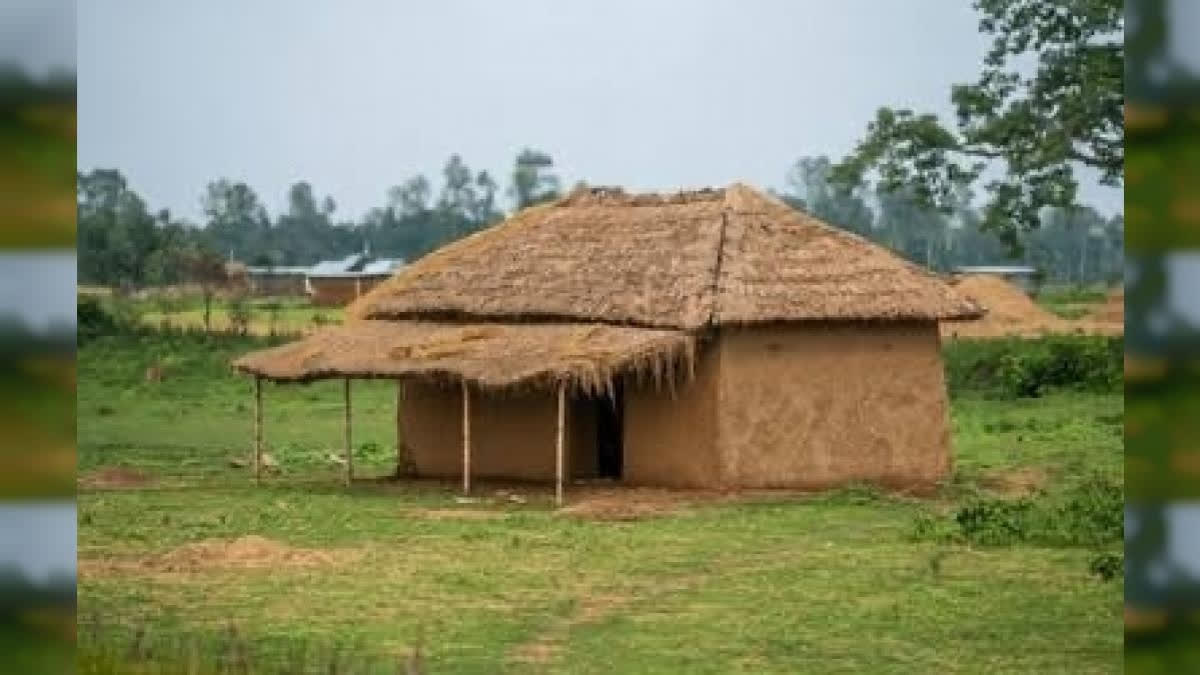New Delhi: Satellite monitoring of stubble burning across six Indian states has revealed a surprising shift in patterns during the ongoing paddy season. While states traditionally reporting high farm fire incidents, such as Punjab, Haryana, and Madhya Pradesh, saw significant drops in cases, Delhi, Uttar Pradesh, and Rajasthan observed increases in stubble-burning events.
Kusum Saini, a Ph.D. research scholar at IIT Delhi, shared the team’s innovative approach with ETV Bharat. "We are proposing a solution for air pollution by processing stubble into products like bricks and insulation boards."
According to Saini, these materials can be used in housing for both insulation and structural purposes, making them suitable for affordable, sustainable housing in rural areas.
"These building units could serve as emergency structures or for families who cannot afford conventional housing. They are also fire- and water-resistant, with a lifespan of up to 20 years under regular weather conditions," Saini added.
Currently, the cost of producing these stubble-based bricks in the lab is between Rs 20 and Rs 30 per brick, but Saini notes that scaling up production could reduce this to around Rs 5 per brick. She emphasised that while further improvements in strength and durability are underway, the product shows promise for mitigating pollution and addressing housing challenges.
Data from the Indian Council of Agricultural Research (ICAR) highlighted these trends, showing that from September 15 to November 10, a total of 17,003 stubble-burning events were recorded across Punjab, Haryana, Madhya Pradesh, Uttar Pradesh, Rajasthan, and Delhi. Punjab's farm fires dropped to 6,611 incidents — the lowest in five years and a notable decrease from the 23,626 recorded last year. Similarly, Haryana’s 981 fires marked a record low, down from 1,676 last year. Madhya Pradesh reported 5,818 fires, reduced from 7,891 in 2023, though the numbers were lower in previous years (3,412 in 2021 and 4,656 in 2022).
In stark contrast, Delhi saw an increase in fires, reaching 12 incidents compared to just 4 last year. Uttar Pradesh registered 1,926 fires, up from 1,533, and Rajasthan’s numbers rose to 1,655, compared to 1,191 in the previous season. This marked the highest stubble-burning incidents Rajasthan has seen over the past five years.
This shifting trend has significant implications for air quality, particularly for Delhi and its surrounding regions, as air pollution typically worsens during the winter due to weather conditions. To address these challenges, researchers at IIT Delhi are working on sustainable solutions to reduce pollution caused by stubble burning.
The marked decline in farm fires in Punjab and Haryana may reflect improved stubble management practices. Punjab, which had about 32 lakh hectares under paddy cultivation this year, and Haryana, with 15 lakh hectares, appear to be making substantial progress in curbing residue burning. These efforts are crucial in reducing the seasonal pollution spikes that affect air quality across northern India.



